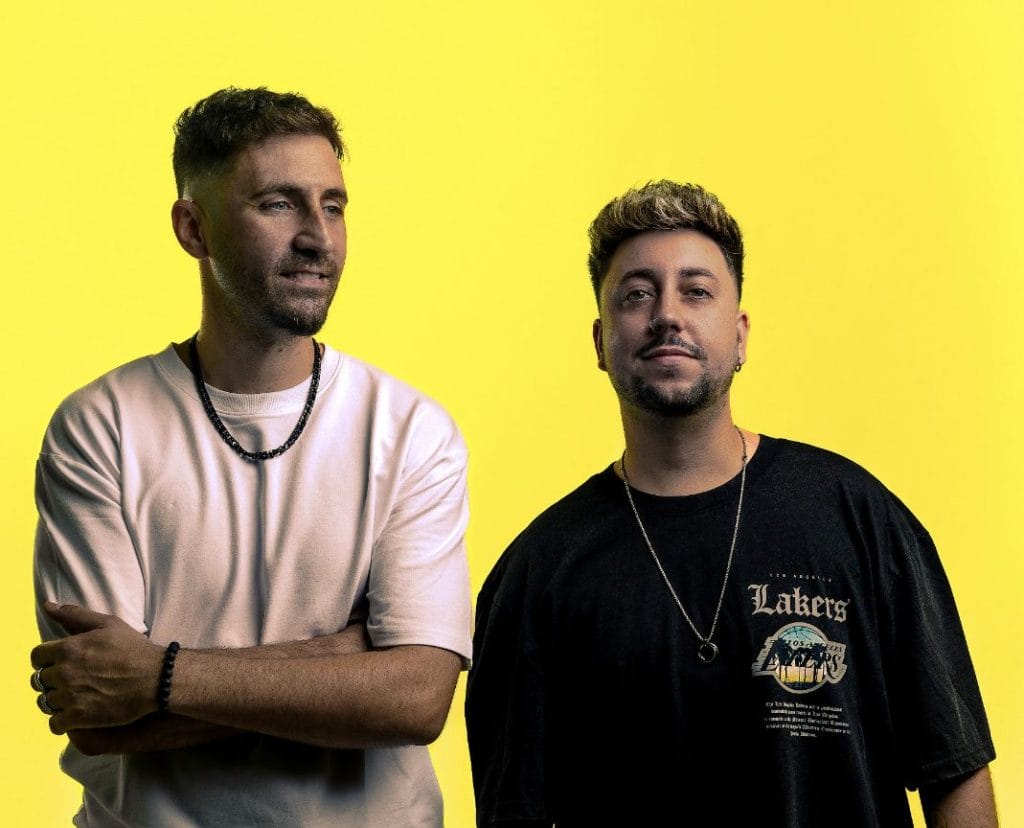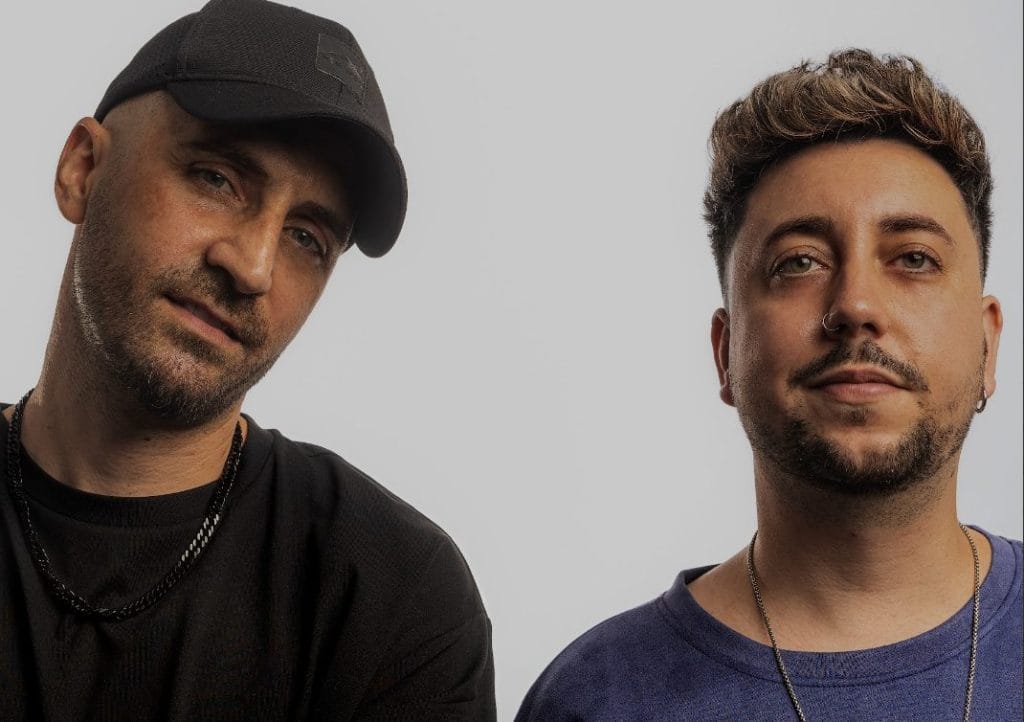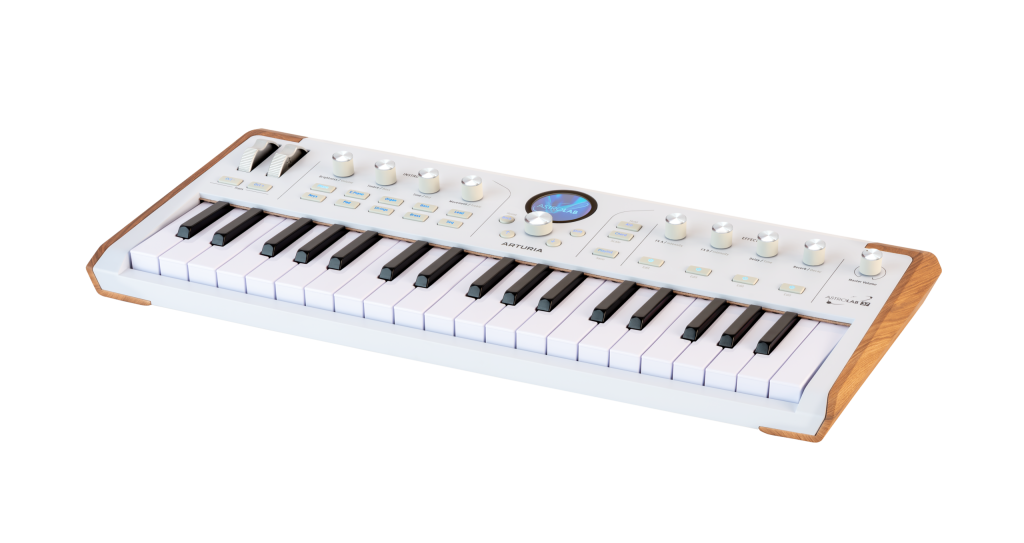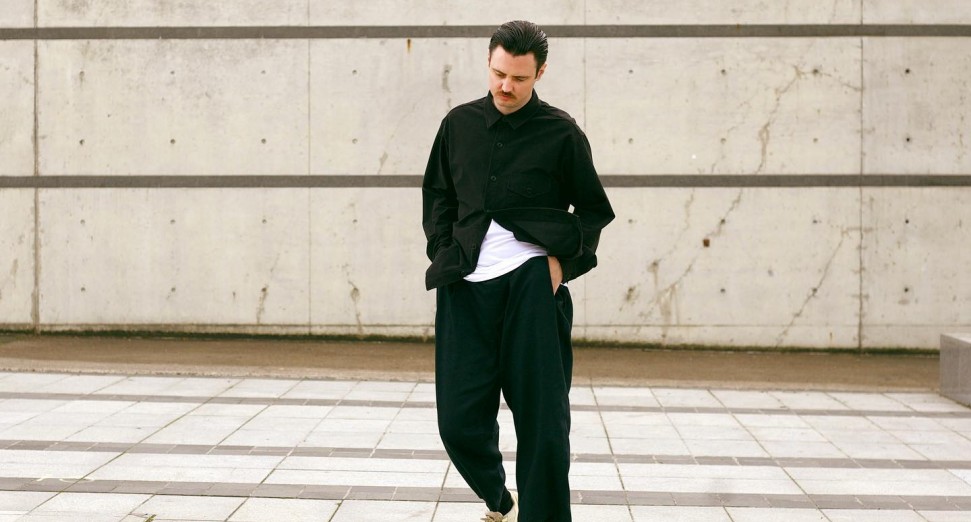
Disaia on Building a Studio That Doesn’t Get in the Way
For Disaia, the Madrid-based duo known for their energetic blend of tech-house, the creative process has always been more important than any single piece of gear. Their new LP, The Sun, out May 23 on their Siena imprint, feels like a direct result of that philosophy—a record shaped not by chasing trends or obsessing over gear, but by refining what already works and knowing when to evolve.
Across each track, there’s a sense of restraint. Not in energy, but in choices. The tools they use are chosen not for clout or complexity, but because they serve the moment, helping to capture inspiration without friction.
Talking to Disaia reveals a perspective that’s refreshingly grounded. They aren’t hoarders of hardware. In fact, the opposite: they keep their setup lean, optimized, and honest. And if something new sparks a different energy, they’ll lean in—but only as far as it serves the track.
That clarity shows up in their work. The Sun pairs dancefloor immediacy with the kind of patience that comes from producers who have stopped trying to prove themselves and started trusting their instincts. They don’t want to be known for one formula.
They want to keep surprising themselves.
Instagram | Beatport | Soundcloud | Spotify | Youtube
How do you make sure your tools actually support the way you like to work?
The truth is, there’s nothing that guarantees the tools you’re using truly support the way you work.
Sometimes, you just feel it, when you’re able to capture an idea in a fluid way, even if it never turns out to be an exact replica of what you had in mind. What matters is that it gets close enough to bring satisfaction instead of frustration. For us, it’s essential to feel like we can show up, sit down, and start producing without friction, without losing that initial spark due to technical blocks or complications.
That comfort of having a fast and natural workflow is what tells us the setup is working. Sometimes the ideas don’t come out exactly as imagined, but what you create with the tools you have can be the first step toward something much more refined. It’s common for us to later replace or improve sounds, but that initial foundation remains the solid base we build upon. In the end, it’s less about having the “perfect” tools and more about having an environment that invites you to create.
Have you ever shaped your sound around one key piece of gear?
Yes absolutely, believe me, we have. Over time, we’ve created some really special sounds, ones that truly left a mark on us. But to be honest, most of those have only been used once. We do have our own set of go-to sounds that we use more regularly, and they’ve become essential elements in many of our tracks.
But then there are others, the more unique ones, that were created for a specific moment, for a specific track, and they served their purpose right there. It’s rare for us to reuse them, not because they’re not good, but because we always aim to create something different. Repeating ourselves bores us.
Even though we’re producers, we don’t want to get stuck in a single sound or be recognized for just one formula, we’d rather keep surprising ourselves and evolving.
What tells you it’s time to cut something out of your setup?
Haha, that’s a good question..but deep down I think we all know the answer. If we’re talking about computers or audio interfaces, it becomes obvious: when everything starts slowing down, freezing, or taking forever to export, it’s just no longer enjoyable to work with. That’s when you know it’s time to move on.
But when it comes to physical gear like synths, organs, arpeggiators, or keyboards, it’s more about a creative threshold. You start out excited, using it constantly, but eventually we get tired of hearing the same sounds. It ends up sitting there taking up space for months, maybe used once in a while. And if we’re talking about samplers or effects, we believe that when something’s no longer useful in your creative process, it’s probably time to sell it and recover some of the investment. To be honest, even though hardware is amazing, these days there are thousands of high-quality plugins that emulate those sounds perfectly. Working entirely from a computer has become a really solid, practical, and affordable option.
How do you avoid stacking gear that doesn’t fit the way you create?
Well, I think I touched on this a bit in the previous question. It’s not always easy to let go of gear, there’s often a sentimental value attached to it, or simply the fact that it’s been part of your journey for a long time. Even if you no longer use it, it somehow ends up stored in a corner or tucked away in some part of the house. That’s just the reality. There’s this internal resistance, like getting rid of it means closing a chapter.
But sometimes you have to be honest with yourself: if a piece of gear is just collecting dust, it might be holding you back creatively or taking up space that could be used more efficiently. Letting go can actually be part of moving forward. It’s not about forgetting what that gear meant, it’s about recognizing that your workflow and needs have evolved.
What’s something you thought wouldn’t matter — but ended up being essential?
Honestly, one of the things we underestimated the most at the beginning was the importance of having a solid, reliable computer.
You always think that creativity will find its way no matter what setup you’re working with, and that’s true to an extent, but the reality is that the tools you use shape your workflow and the quality of your results more than you expect.
We started like many others do: with a basic laptop, a free version of Ableton, free plugins and sample packs, and very limited gear. We were teenagers, producing music in our bedrooms with old headphones, cheap monitors, and a wardrobe behind us acting as a kind of accidental sound treatment. At that stage, you work with what you have, and in a way, that limitation pushes your creativity, but it can also slow you down and affect your sound quality without you even realizing it.
Everything changed when we decided to invest in a high-performance computer, high-quality plugins, and sample libraries, and to start incorporating real instruments like electric or acoustic guitars into our productions. That decision had a huge impact, not just on the technical side, but also on how we approach music.
Recording real instruments adds depth, character, and a level of authenticity you can’t always achieve with virtual tools. We’ve always admired the sound of 80s music, the warmth, the texture, the richness of those analog recordings. The production techniques of that era, with far fewer resources than we have today, still inspire us deeply.
Many artists today are trying to recreate that feel, and we’re definitely influenced by that vibe. So yes, what started out as “just a computer” turned out to be the key that unlocked a much more professional approach.
How do you keep your setup consistent without letting it get stale?

For us, it’s inevitable that the workflow will become boring or repetitive if you always use the same things. In the end, if you keep repeating the same tools and sounds, you’ll end up making the same thing over and over, and that’s not what we’re after.
The key is to keep searching for new things and adapting to what’s available at the moment, always within your possibilities. In our case, for example, we’re exploring new tools that we didn’t use in previous tracks that were more oriented towards a club or party style. Now we’re experimenting with the Machine, samplers, acoustic and electric guitars, basses, and real keyboards to create a more distinctive sound.
However, we know we can’t use these resources in all of our productions, nor in every track, because they don’t always fit or don’t always add what we’re looking for. As I mentioned before, we try to implement them in key moments, when they truly make a difference, but the truth is, when you start to get bored of something, you tend to stop using it, and that’s part of the creative process as well.
What advice would you give to someone trying to build a setup that actually flows?
Our advice would be not to spend money recklessly buying instruments randomly. It’s important to first figure out what you want to do, what type of music you want to produce, and where you want to go with it. Once you have that clear, identify the tools you need to make it happen and prioritize what you will actually use.
The best approach is to go step by step, sticking to what you can afford, because that will push you to do more with less. You’ll learn to make the most of limited tools and, in the end, master more techniques.
It’s also crucial to sound good, so investing in quality products and sounds is key. Additionally, it’s essential to learn the basics, like piano, musical scales, and notes. If there’s an instrument or device you’re passionate about, you should incorporate it into your productions, because it will not only boost your creativity but also keep you motivated and prevent burnout.



